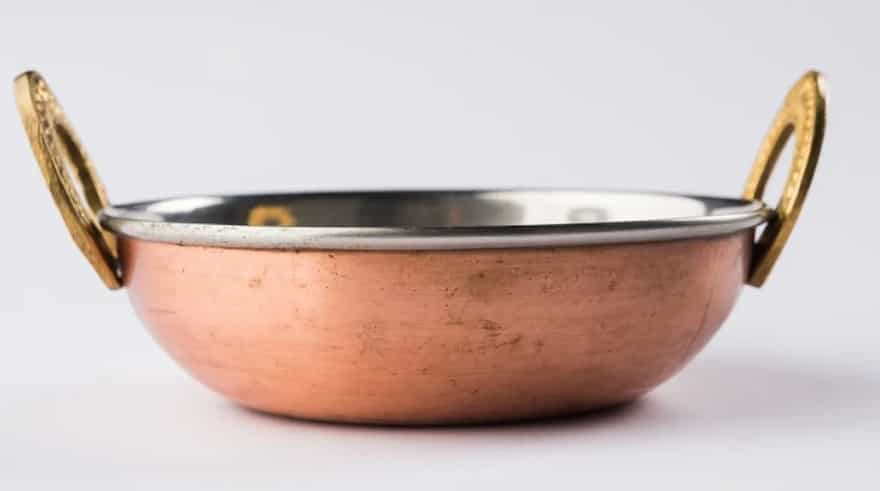Indian cooking is hugely dependent on the kadhai. This versatile cookware comes in handy in different cooking styles and recipes. Use it for sauteing, steaming, frying, or deep frying. Many Indian desserts are also made in this, including jalebi, Gulab jamun, an array of halwas, etc. Having said that, it goes without mentioning that one must have the right kadhai to do the job. Apart from the size, shape, and weight, it's essential to consider the material it's built with. From rustic clay and iron to stainless steel, cast iron, copper, and nonstick are the most popular choices. So, which material is an ideal pick? To know it read the following suggestions.
Stainless steel
These kadhais have always been a popular choice. They are not only durable but also simple to use and maintain. They won't corrode and may be used on induction hobs or gas burners. On the flip side, since they are not the finest heat conductor, be careful not to scorch your meal. One needn't hunt for the best stainless steel kadhai from shop to shop. By selecting the features, one can buy it online from trusted ecommerce sites.
ASIN ID - B0BNJ8BSBB
Aluminum
 Indian aluminium kadhai, Image Source: Depositphotos
Indian aluminium kadhai, Image Source: Depositphotos
For many people cooking in aluminium kadhais has been a tradition for generations. It is preferred for its durability and affordability. You can safely use this in a deep fryer. Aluminium is affordable, lighter, and has excellent thermal conductivity. The amount of aluminium that enters food increases the longer it is cooked or stored in aluminium. The highest levels of aluminium absorption occur in leafy vegetables and acidic foods like tomatoes and citrus fruits. On the other hand, aluminium kadhais require a bit more tender care.
Nonstick
One of the easiest types of kadhais to use is nonstick. You don't need to add extra butter or oil when cooking; the cleanup just takes a few seconds. Look for nonstick kadhais with a 5-layered granite coating. Another alternative includes a three-layered metal spoon-friendly covering. It shields the kadhai's surface from nicks caused by the cooking spoons. Also, prefer nonstick with ceramic coating. Despite being costly, it makes the cookware incredibly sturdy and long-lasting.
Copper
 Copper kadhai, Image Source: Shutterstock
Copper kadhai, Image Source: Shutterstock
Because of their superior heat conduction properties, copper kadhais often perform well. Faster heating and cooling are possible with this material. This quality makes the material unique and adaptable for various applications. They work well in the oven and on the stovetop. These utensils are less durable than cast iron or stainless steel and can easily be damaged by high heat. You can get different types of copper kadhai online too.
ASIN ID - B09Q66K5ZM
Anodized aluminium
Aluminium surfaces develop a layer of aluminium oxide when submerged in an acidic solution and subjected to an electric current. This is referred to as anodization. Anodized aluminium cookware has a firm, nonstick surface that makes it scratch-resistant, long-lasting, and simple to clean. It acts as an insulator just as effectively as regular aluminium. Furthermore, anodizing prevents aluminium from cookware from leaking into meals, especially acidic foods like tomatoes and curd. Given their sturdy build, these kadhais can be used for any purpose. Due to their rugged design, they are durable and practical. You can use them in hot environments without worrying about them melting. They are also easy on pocket.
ASIN ID - B0781QZD8Q
Cast iron
This kitchenware is heavy and prone to rust if not properly maintained, so keep your kadhai with the necessary care. Cast iron is both a good heat conductor and a good heat insulator. Because it can more evenly spread heat to the surface, a cast iron kadhai is preferable to an iron one. It must be seasoned to prevent food from sticking. Markets sell cast iron kadhais that have already been seasoned. A few of a cast iron kadhai's USPs are even cooking, heat retention, chemical-free, and high cost-effectiveness. In general, cast iron cookware is secure and well-liked for scorching.


